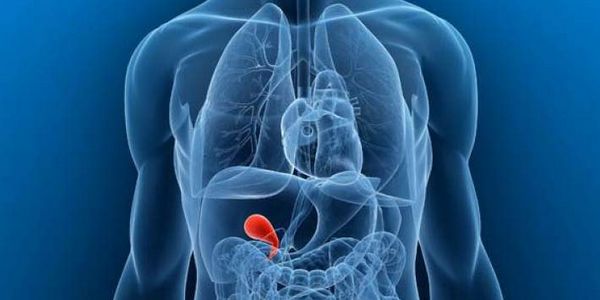Cholecystitis: what is this, the cause of the, symptoms, diagnostics, treatment, prevention

What is cholecystitis?
Cholecystitis is inflammation of the gall bladder, one of the most common complications cholelithiasis.
Cholecystitis: the cause of the
The main cause of cholecystitis-emergence of gallstones. This prevents normal outflow of bile and contributes to the infection of intestinal microflora. From time to time encountered inflammation in the gallbladder cause its walls, which further contributes to the development of chronic inflammation (chronic cholecystitis is).
Among other reasons for the development of cholecystitis distinguish:
- features of the gall bladder and ducts;
- gipodinamiя;
- bile stasis;
- autonomic disorders;
- reduced secretory activity of the stomach;
- injury of liver and gallbladder;
- prolonged fasting.
Cholecystitis: symptoms of cholecystitis
For acute cholecystitis is characterized by intense paroxysmal pain in the right hypochondrium, especially when changing body position. Sometimes the pain can irradiirovat' in the back or neck. Body temperature may rise slightly. However, in the case of purulent process and general intoxication of the organism, body temperature rises to 39-40 degrees, When this patient worried about nausea, vomiting, rapid pulse and chills.
When zakuporivanii duct stone develops hepatic colic, that leads to jaundice. Urine color when this darkens, and Kal decolorized.
Chronic cholecystitis manifests with nausea, discomfort and dull pain in the area of right hypochondrium, emerging after a meal. Long time chronic cholecystitis may be latent and manifest themselves only after reception of fatty foods. For beskamennogo chronic cholecystitis is characterized by the appearance of weakness, half-heartedly, increased excitability and insomnia. Exacerbation of chronic cholecystitis in symptomatic resemble acute cholecystitis.
Cholecystitis: diagnostics
Diagnosis of acute cholecystitis is based on the collected history. The doctor conducts the palpation of the abdomen, as well as investigates, whether symptoms of hepatic colic. Using ultrasound detected an increase in gall bladder and ducts to the presence of stones.
For advanced studies biliary ERCP Endoscopic Retrograde Cholangiopancreatography is assigned (ERKhPG).
Blood test shows increased content of leukocytes, highest level of SEDIMENTATION RATE, Meta, as well as disproteinemiju. Biochemical analysis of the urine shows elevated aminotransferase activity and amylase.
Cholecystitis: types of disease
Happens to the acute and chronic cholecystitis. In turn, acute cholecystitis can occur in Bluetongue and destructive (purulent) form. The destructive forms of disease can be attributed to flegmonoznyj, flegmonozno-ulcerative, diftericheskij and gangrenous cholecystitis.
Chronic cholecystitis may be as a consequence of the acute form of the disease, and develop yourself. Depending on the morphological picture, allocate catarrhal and eight holetsistit. Also distinguish acalculous and calculous cholecystitis. The latter develops due to gallstone disease.
Patient actions in cholecystitis
Symptoms of cholecystitis are no different specificity and overlap with the symptoms of many other diseases of the gastrointestinal tract. Therefore, if the first occurs, pain should see a doctor to conduct a proper diagnosis of the disease.
With suspected acute cholecystitis must immediately call an ambulance. Before the, How come doctors, It is not recommended to eat, take painkillers or do gastric lavage.
Treatment of cholecystitis
Treatment of acute cholecystitis and exacerbations of chronic cholecystitis is conducted in a hospital environment. Such treatment is the removal of purulent process, and in extreme cases-surgery to remove the gallbladder (cholecystectomy) – laparoscopy or open method. The patient is prescribed detoxification and antibiotic therapy (metrogil). Also appointed antispasmodics (drotaverin and etc), painkillers and drugs, depressing the secretory activity of the stomach.
In chronic cholecystitis treatment is an important component of the diet № 5 on classification by Pevsner. To normalize the outflow of bile choleretic and holecistokineticheskie apply medications. It is also recommended that you welcome with hepatoprotectors antitoxic effect.
Complications of cholecystitis
Cholecystitis can cause such complications:
- perforation of gallbladder;
- obstructive jaundice;
- necrosis of the gallbladder;
- abscess and development of peritonitis;
- the secondary inflammation in the pancreas;
- gall bladder cancer.
Prevention of cholecystitis
Prevention of cholecystitis is in compliance with the principles of healthy eating. It is important to avoid negative factors, contributing to the development of cholecystitis, in particular of hypodynamy, Obesity, stress and intestinal infections.
